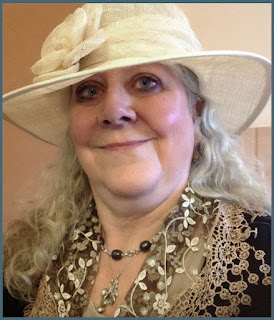My latest novel is The Widow's Last Secret which came out earlier this year. It is set in rural England in the 1840s – just as the steam railways are being built – and features Bella, a woman farmer, and James, a railway engineer. It was partly inspired by the ongoing battle over HS2, a high-speed railway that is currently being built in England. This got me wondering about how people reacted when the first railways were being built. Nowadays, trains are so much part of the fabric of our lives, but to the early Victorians they must have been such a shock to the system. They changed so much about how people lived; from the food they ate to the clothes they wore to the types of job they did.
I soon discovered that there had been very mixed feelings when it came to the early railways. Like James, the railway engineer in my novel, many people were exhilarated by the changes the railway would bring. They saw it as a form of progress that would improve people's lives. Others were very suspicious of them – people even feared that the trains would cause birds to fall from the sky and hens to stop laying eggs!
In the novel, Bella is from a rural background and feels a genuine bond with the land. Through her story, I explore the lives of rural Victorians; the hardships they faced and the tough choices they had to make. When it comes to the railways, she and James are on opposite sides of the argument and yet they are drawn towards one another despite this. As their relationship deepens, they each have to reckon with the secrets in their pasts – and ultimately come to realise that progress and advancement always comes at a cost.
What is your preferred writing routine?
I have a full time job alongside my writing so I have to write wherever and whenever I can! I write quite a bit on my morning commute from Brighton to London which means I can then have some time off at the weekend. I would love to be one of those people who get up at 5am and write before work but that will just never happen – I'm not a morning person! Some people say you should write every day but for me, it is important to have breaks so that I can reflect and recharge.
What advice do you have for new writers?
I would have two pieces of advice. Firstly, take all advice with a pinch of salt! There are so many books and articles telling you how you should write but everyone is different and what works for one, won't work for all – trust your instincts. My second piece of advice is to read! Read as much as you can and read widely. This will never be wasted and you'll be learning about writing, and developing your own style, without even realising it.
What have you found to be the best way to raise awareness of your books?
That's a tough one as my publisher takes care of the marketing and promotion of my books and a lot of it comes down to magical social media algorithms that I don't understand! If you are an unknown writer it can be really hard to get your book out there but I think word of mouth is still so important. So, a plea to readers everywhere: if you read a book that you love, leave a review and tell your friends – or better yet, buy them all a copy.
Tell us something unexpected you discovered during your research
I have discovered so many weird and wonderful things as part of my research – in fact that's one of the reasons I love writing historical fiction as much as I do. Something unexpected I discovered while researching The Widow's Last Secret was the role of women in the navvy camps. While the camps were dominated by male workers, there were women who lived and worked there, including some in positions of power. This inspired the character of Long Rachel in the novel, who runs the navvy camp where Bella finds herself living in the early part of the book.
What was the hardest scene you remember writing?
The hardest scene I have written was in my first novel, Daughter Of The Shipwreck. I don't want to give too much away but let's just say that I decided to kill off one of my characters and I literally wept as I wrote it. Fortunately, my editor thought it was just too sad and so we decided to give the character a reprise and to change that part of the book. I am so glad that I did!What are you planning to write next?
I am currently working on my third novel which is set in the 1780s aboard a sailing ship. I am loving all the research this involves and am becoming quite the expert on all things nautical. The book involves exploration and astronomy, as well as a fair amount of intrigue and adventure. I can't wait to get it finished and into the hands of my readers!
Lora Davies
# # #
About the author
Lora Davies studied English at Hull University before training as an actor at East 15 Acting School. She went on to work as an actor, director and workshop leader for companies including English Touring Theatre, Chichester Festival Theatre and Theatr Clwyd. Her debut novel, Daughter Of The Shipwreck, was published in August 2021 and her second novel, The Widow's Last Secret, was published in January 2022. She is represented by Hannah Weatherill at Northbank Talent Management. Find out more on Lora's website: www.loradavies.com or follow her on Twitter @DaviesLora
.jpg)
























_Chariot_by_Westminster_Bridge_-_geograph.org.uk_-_259570.jpg)


